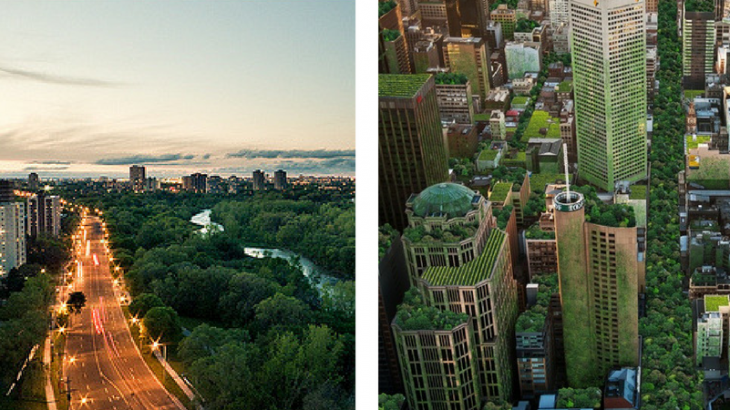The human population in cities and urban centres are growing by the day which means an increasing stress on natural resources and urban infrastructure. Simply put, there is a pressing need for more trees in our cities to tackle health issues, economics, our sustainability quotient and food resilience, biodiversity conservation challenges and climate change. The benefits of cultivating urban forests are numerous and varied but enlisted below are the top 10 reasons (in our opinion) to push your local policymakers and governance bodies to plant more trees in your neighbourhoods!
- Food security and environmental resilience
Trees are a source of fruits, nuts, and leaves that are consumed by human beings’ animals either directly or indirectly. It is important for us and the environment that we eat locally and seasonally for bodies to function optimally and to reduce our carbon footprint. If we can cultivate groves of fruit-bearing trees closer to cities, we can benefit from consuming the fresh produce AND the make gains from the host of other positive effects that trees have on the environment.
- Improve air quality
Air pollution caused by vehicles, power consumption, industry and other commercial activities that burn fossil fuel, is spawning several health-related problems that urban residents experience and it also takes a toll on the aesthetics of our cities (discolouration of buildings and poor visibility). Trees act as a filtration system for dust particles, dirt, smoke and other noxious gases. The leaves and bark of the trees allow particulate matter to settle on them. Trees also absorb carbon dioxide from the atmosphere during the day and release oxygen.
- Cooler temperatures
The urban heat island effect is a phenomenon where asphalt and concrete structures absorb a huge amount of radiation from the sun and convert it to heat energy thereby increasing ambient temperatures. The heat island effect is experienced more intensely in urban areas due to the lack of natural landscapes (soil, water bodies, shrubs and trees). Trees also help with what is known as evaporative cooling, where the water absorbed by trees and plants are converted to water vapour using the heat from surrounding air. This, in turn, has the effect of cooling the air around tree clusters and the effect is felt even more significantly in areas where the tree cover is dense such as parks and gardens.
Having trees placed in strategic areas around offices, schools and residential areas can reduce the amount of power spent on air cooling during the summers.
- Mental and Physical Health
Mental and physical health is impacted tremendously by the presence of trees. Shinrin Yoku or forest bathing in Japan is a popular activity among city dwellers to forge a connection with nature that is known to have a plethora of health-boosting effects on the body and mind. Stress and anxiety reduction, improved blood pressure and moods and overall relaxation are among the advantages of spending time in nature. More trees also mean lower air pollution levels and cooler temperatures which impact our energy and physical ability to do things like exercise, spend time outdoors running chores or simply walking to work or the grocery store.
- Disaster Mitigation
Trees are responsible for reducing the destruction caused by floods, strong winds and cyclones. A mature every green tree can intercept 15, 000 litres of water per year. Cities that are prone to flooding due to heavy rainfall should necessarily be covered with trees for safety and disaster mitigation.
- Maintaining biodiversity
Parks, gardens and urban areas with thick foliage become a haven for birds, insects and small animals who are also residents of our towns and cities. They are often forced out on to streets and urban dwellings for the lack of trees and are either killed and pushed to extinction or they become rubbish-eating pests that we are constantly trying to rid the city of.
- Recreation and social well-being
Children need open spaces to play and run around as do adults to enjoy simple pleasures like reading, picnics, exercising, meditating or spending quality time outdoors with nature and loved ones. Having open spaces lush with greenery to enjoy recreational activities boosts creativity, keeps you fit and active and provides a relaxing backdrop to any outdoor activity.
- Aesthetics and Urban Beautification
While tall buildings with impressive glass facades and modern design add a certain charm to city life, they are no substitute for the beauty that nature can add to the landscape. Trees add beauty to our neighbourhoods, both commercial and residential, and make a good case for themselves when it comes to urban planning and infrastructure. Roads may need widening, but unless they are lined with trees that bloom with flowers every spring and provide shade to pedestrians or help cool temperatures during summer, the purpose of development and building conveniences is only half-fulfilled.
- Building appreciation and sensitivity towards nature
How else can we teach a generation of city dwelling kids on the importance of preserving nature, on working towards conservation, on the need for acting mindfully and inculcating sustainability in every walk of life? The lack of green infrastructure is going to influence the way in which children living in cities react to the pressing climate change issues that we are going to face in the future.
- Climate Change
And finally, climate change, the hottest hot-button environmental issue of our time, can be tackled in an easy and cost-effective manner–by planting more trees. Cities generate a lot of heat due to our high-power consumption, lack of trees and increasing amounts of concrete surfaces! What’s more—the ever-increasing size of our cities means we have fewer forests and green landscapes outside cities to take at least some amount of the heat (quite literally) produced by industry and commercial activities within city limits.

Are there any projects aligned to creating Urban Forests? Looking for something to do in Gurgaon.